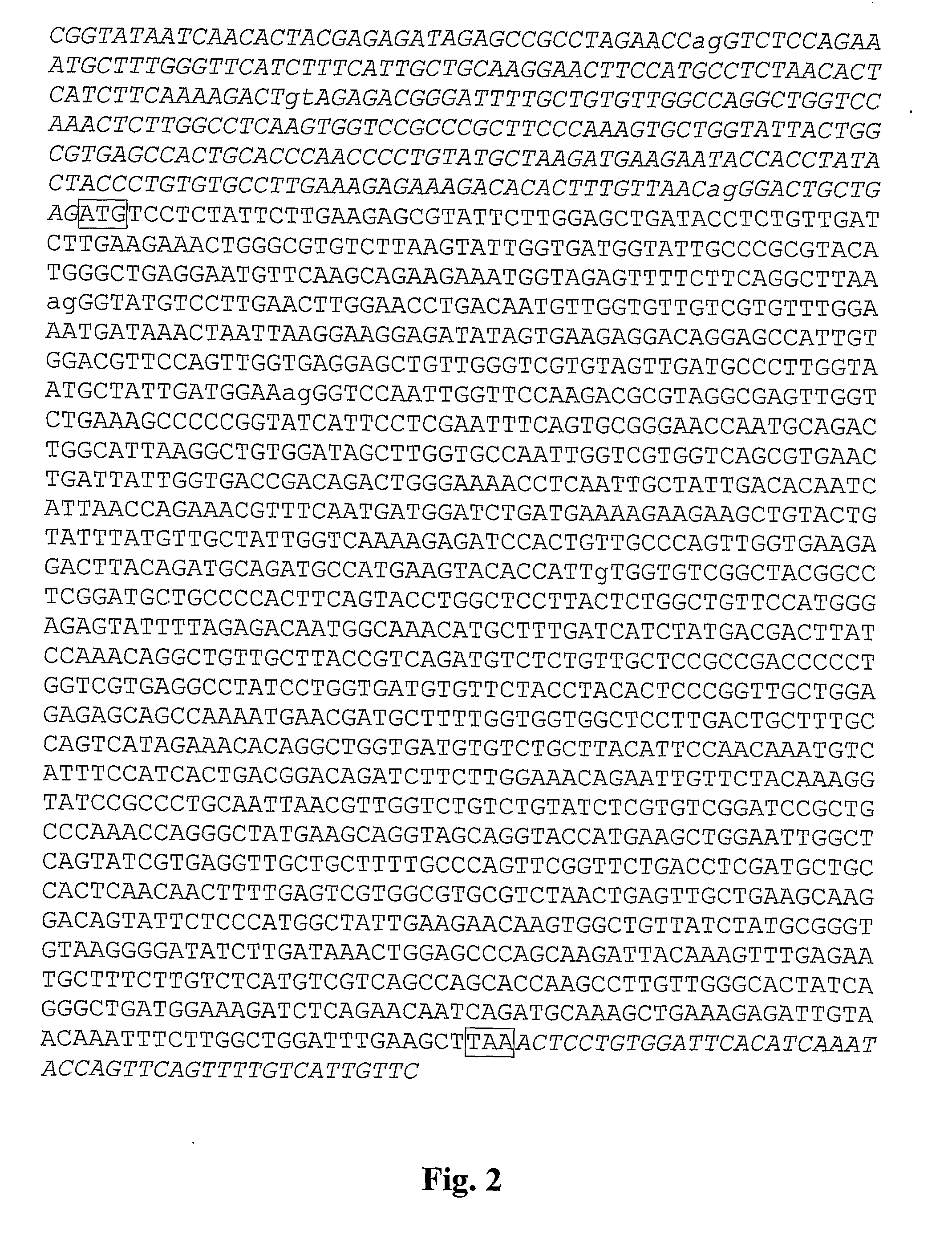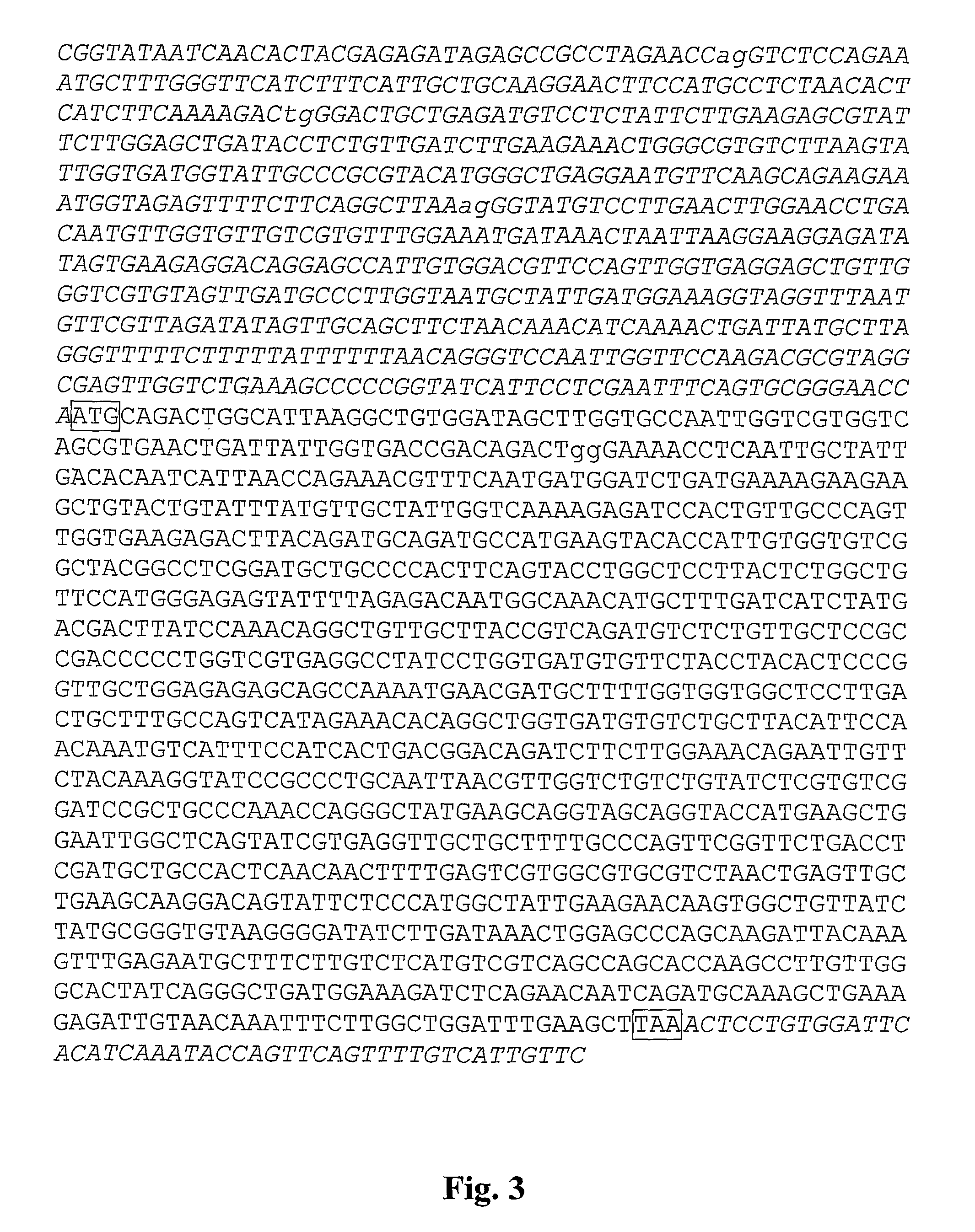Human Angiostatin Interacting and Tumor Metastasis Involving Protein Variants and Uses Thereof
a technology of human angiostatin and tumor metastasis, which is applied in the direction of vector-based foreign material introduction, peptide/protein ingredients, depsipeptides, etc., can solve the problems of more destruction, approach can pose significant drawbacks for patients, surgery may not completely remove neoplastic tissue, etc., to reduce expression and/or activity, reduce the formation and/or stability of complexes, and increase expression and/or activity
- Summary
- Abstract
- Description
- Claims
- Application Information
AI Technical Summary
Benefits of technology
Problems solved by technology
Method used
Image
Examples
example 1
6.1 Example 1
Identification of HAI-TMIP Variants
[0597]The techniques below were used to identify HAI-TMIP variants 3 to 7.
6.1.1 Materials & Methods
6.1.1.1 Cell Lines
[0598]The cell lines used in the methods to identify the HAI-TMIP variants were MDA-MB-231 (a highly invasive breast cancer cell line), MCF-10F (an immortalized human breast epithelial cell line), MDA-MB-435 (a melanoma cell line), MCF-7 (a human breast adenocarcinoma cell line), and MCF-7 / ADR (an adriamycin-resistant variant of the MCF-7 cell line).
6.1.1.2 Total RNA Extraction from Cell Line
[0599]1 ml of TRIZOL Reagent was added to a dish (about 10 cm2) to lyse cells. The homogenized samples were incubated for 5 minutes at 15 to 30° C., then added 0.2 ml of chloroform. Tubes were vigorously shaken by hand for 15 seconds and then incubated at 15 to 30° C. for 2 to 3 minutes. The samples were centrifuged at no more than 12,000×g for 15 minutes at 2 to 8° C. Following centrifugation, the colorless upper aqueous phase was t...
example 2
6.2 Example 2
Development of Antibodies
[0615]This example provides methods for producing antibodies that immunospecifically bind to HAI-TMIP variants 3, 4, 5, 6 and 7.
6.2.1 Development of Murine-Derived Monoclonal Antibodies
6.2.1.1 Antigens
[0616]HAI-TMIP variants 3 to 7 were recombinantly expressed in E. coli and five (5) peptides covering HAI-TMIP variants 3 to 7 were chemically synthesized using commercially available methods. The sequences of the five peptides are provided in FIG. 11.
6.2.1.2 Immunization
[0617]Balb / c mice were immunized with an antigen in complete or incomplete Freuds adjuvent (Sigma). Then mouse with highest titer against antigen was selected and sacrificed by bleeding. Spleen cells of sacrificed mouse were fused to partner cells (sp2 / 0, ATCC) at ratio of 2:1 by 50% PEG(Sigma). Fused cells in medium containing 10% FBS and HAT (Sigma) were seeded in 96-well microplates, at approximately 10000 cells / well. Supernatant of wells with clones growing were screened by ind...
example 3
6.3 Example 3
Breast Cancer Diagnosis
[0627]This example demonstrates the correlation between the expression of HAI-TMIP variants and breast cancer.
6.3.1 Materials & Methods
6.3.1.1 Genomic DNA copies of Different Variants on Different Cell Lines by PCR Cell Lines
[0628]The cell lines used in the methods to identify the HAI-TMIP variants were MDA-MB-231 (a highly invasive breast cancer cell line), MCF-10F (an immortalized human breast epithelial cell line), MDA-MB-435 (a melanoma cell line), MCF-7 (a human breast adenocarcinoma cell line), and MCF-7 / ADR (an adriamycin-resistant variant of the MCF-7 cell line).
Genomic DNA Extraction from Cell Line
[0629]Genomic DNA extraction Kit from Tiangen was used to extract genomic DNA. Briefly, genemic DNA was extracted by lysing cells, transferring the DNA to a centrifuge filter, eluting the DNA with TE and measuring the DNA by an ultraviolet-photometer.
PCR
[0630]Primers was designed at 16042 (upstream AGGCTTGAACTCCTGGGCTCA) (SEQ ID NO: 42) and 1677...
PUM
| Property | Measurement | Unit |
|---|---|---|
| Fraction | aaaaa | aaaaa |
| Fraction | aaaaa | aaaaa |
| Fraction | aaaaa | aaaaa |
Abstract
Description
Claims
Application Information
 Login to View More
Login to View More - R&D
- Intellectual Property
- Life Sciences
- Materials
- Tech Scout
- Unparalleled Data Quality
- Higher Quality Content
- 60% Fewer Hallucinations
Browse by: Latest US Patents, China's latest patents, Technical Efficacy Thesaurus, Application Domain, Technology Topic, Popular Technical Reports.
© 2025 PatSnap. All rights reserved.Legal|Privacy policy|Modern Slavery Act Transparency Statement|Sitemap|About US| Contact US: help@patsnap.com



